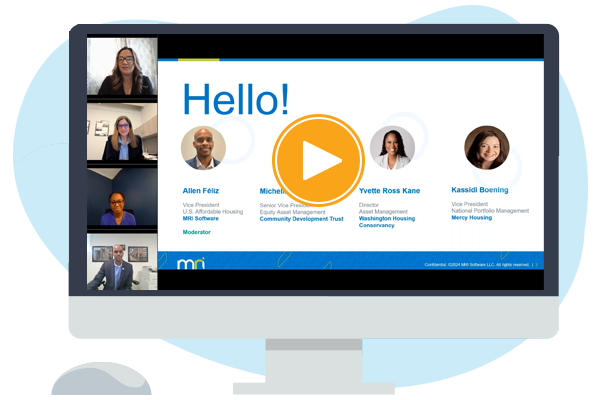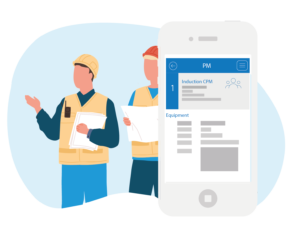Two ways to automate your lease abstracts (and when to use each)
This blog was written by Itzik Spitzen, co-founder and CTO of LeasePilot. LeasePilot, an MRI partner, is a context-aware lease automation platform. As the architect of the company’s software framework, Itzik takes a hands-on approach to managing the company’s technology strategy and software engineering teams. Itzik holds a Master’s Degree in Computer Science as well as Practical Software Engineering diplomas from premier academic institutions in Israel.
Of all the things that need to be done during a leasing lifecycle, creating an abstract is far and away the most dreaded task. But because of the abstract’s centralized importance to the daily operations of every real estate business, it’s a necessity. And until recently, it has been a necessity with no shortcuts. But emerging technologies are finally providing viable alternatives to the traditional process.
At a conceptual level, there are only two possible ways that a lease abstract can be automated. But before I can talk about and compare each method, there’s some important background I need to cover first.
Making Breakfast with Structured Data
Computers and the software that runs on them — including the so-called “artificial intelligence” software — are dumb.
Coming from the CTO of a software company, that might sound like a provocative statement. But I don’t believe that it is. In fact, I think most of my peers would agree with me. If you’re skeptical, here’s an experiment you can try right now:
Step 1: Unlock your smartphone and open the Calculator app.
Step 2: Tap the following buttons: 2 + 2 =
Step 3: Observe the result
Hopefully your calculator produced an output of 4. Everything is working as it should. Go ahead and clear that result so we can continue. This time, let’s throw your calculator a proverbial curveball:
Step 4: Type the following sequence: 🥓 + 🍳 + 🍞 =
Step 5: Observe the result
At this point, astute readers may have noticed that Step 4 is impossible. Even WolframAlpha, the most advanced AI-powered calculator available to the public, can’t make sense of the emoji math above. But you probably figured it out instantly. The answer to 🥓 + 🍳 + 🍞 is, quite obviously, breakfast.
The reason why your Calculator app can’t handle EmojiMath is obvious enough: it wasn’t designed to understand emoji-based inputs. To enable a computer to understand EmojiMath, an engineer would need to add new rules to the calculator software specifying the meaning of each new emoji. The important takeaway here is that computers don’t have general intelligence in the same way that human beings do. Even so-called artificial ‘intelligence’ is task-specific; you can’t use a self-driving car’s AI to trade stock on the NYSE.
So what does all of this have to do with lease abstracts? Everything, actually. The purpose behind this exercise is to introduce the concept of structured data as the essential and fundamental prerequisite for software-based automation of any kind. Structured data describes information that is indexed and formatted in a way that a computer can understand. When you and I look at a lease, we see and understand the structure. But a computer does not. To a computer, there’s no structure to a lease beyond the string of words, punctuation, and line breaks that the document contains.
So when we’re talking about how a computer can automate a lease abstract, what we’re really talking about is how we can convert the raw, unstructured data in a commercial lease into structured data that a computer can understand. And there are only two ways that can be done:
1. Machine Learning Analysis
2. Context-aware ‘Snapshot’
The rest of this piece will discuss how each method works and when to use it. Note that these methods are complementary and have very different use cases. A cutting-edge leasing team will be able to use both in its workflow.
Method 1: Machine Learning Analysis
In a nutshell, the Machine Learning Analysis method uses advanced software to “read” a lease and convert it into structured data that a computer can understand. This process requires a lot of time and computing power, and as a result, a Machine Learning Analysis is typically only run after the final version of a lease is signed and executed. There are a handful of different technologies that a Machine Learning Analysis uses, but for the sake of brevity I’ll focus on the most crucial: Natural Language Processing.
Natural Language Processing (NLP) uses an algorithm to convert the unstructured human language in a commercial lease into a structured dataset that computers can work with. The algorithm works by comparing the unstructured language in the lease to a large sample dataset of pre-structured leasing language. Over time, the algorithm “understands” the meaning of the content in the new lease and builds a logical data structure around its findings.
Although these algorithms aren’t perfect—a human still needs to review the results and correct any mistakes—they “learn” more with each new lease and grow more accurate over time. With all of the grammatical oddities and complexities implicit in human language, this feat is nothing short of amazing.
Method 2: Context-aware ‘Snapshot’
Lease abstraction using the ‘Snapshot’ method is relatively new on the CRE scene. This method doesn’t require a complicated NLP algorithm, uses minimal processing power, and can produce an error-free abstract instantaneously (no human review required). Given all of these advantages over the Machine Learning Analysis method, you’re probably wondering why the Snapshot method isn’t common practice. Here’s the catch: a Realtime Database Snapshot can only produce an abstract from a lease that is drafted and revised using software built specifically for creating commercial lease documents.
Although specialized leasing software is relatively new, it operates on the same principles that every real estate lawyer and paralegal already knows reflexively: commercial leases have a logical structure with a predictable framework. For example, when an extension option is added to a base lease form, the lawyer drafting the lease automatically knows that s/he will need to update the term, rent tables, and assignment provisions accordingly. The lawyer knows the broader implications a single change can have because s/he is aware of the larger context.
Specialized leasing software operates on the same idea of contextual-awareness. It’s the equivalent of giving your computer a comprehensive ‘map’ of your base forms and option language before a lease is drafted. When it’s time to draft a new lease, the software uses the ‘map’ to build your lease with data that’s already structured. As default option language is added, removed, or manually modified during the negotiation process, the underlying data is continually updated in real time. With this approach to lease-drafting, creating an abstract is as simple as a ‘snapshot’.
Context-aware lease-drafting tools are relatively new to the industry, and as such the snapshot method isn’t as well known as Machine Learning Analysis. But as more and more landlords begin to take advantage of context-aware drafting tools, there’s no doubt that this type of software—and abstracts created with the Snapshot method—will be the industry standard in the next 5-7 years.
Use the Right Method
Now that you have a better understanding of both abstracting methods, the reasons why these methods are complementary are easier to understand. Let’s bring them into view more clearly.
When to use a Machine Learning Abstract
The primary advantage of Post-Lease Analysis is its flexibility. It can be used to create an abstract for almost any lease, which makes it particularly useful when landlords acquire new assets or wish to gather historical leasing data from their portfolio.
The downside of the Post-Lease Analysis method is accuracy and consistency. After the analysis is run, the abstract still requires human review and correction which limits the scalability of the method and eliminates the feasibility of abstracting each iteration of a lease draft during negotiation.
For these reasons, the general rule-of-thumb is that landlords should use the Post-Lease Analysis method for leases on tenant paper or legacy leases.
When to use a Data Snapshot Abstract
Producing an abstract using the Snapshot method is the future of leasing. Its advantages over Post-Lease Analysis are clear: It’s instant, it can be run with each draft to speed up negotiation, and it’s 100% accurate every time.
The obvious downside is that a Snapshot is only possible with leases that are created with specialized lease-drafting software on the landlord’s forms. But as context-aware lease-drafting software becomes the industry norm, this drawback is becoming less important every day.
Affordable Housing Asset Manager Insights: Maximize Portfolio Performance by Supporting Housing Operators
From rising operational costs to increased demand for flexibility and technology, asset managers are navigating unique challenges to support property management teams while ensuring portfolio health and resilience. Recent MRI research delves into the…

